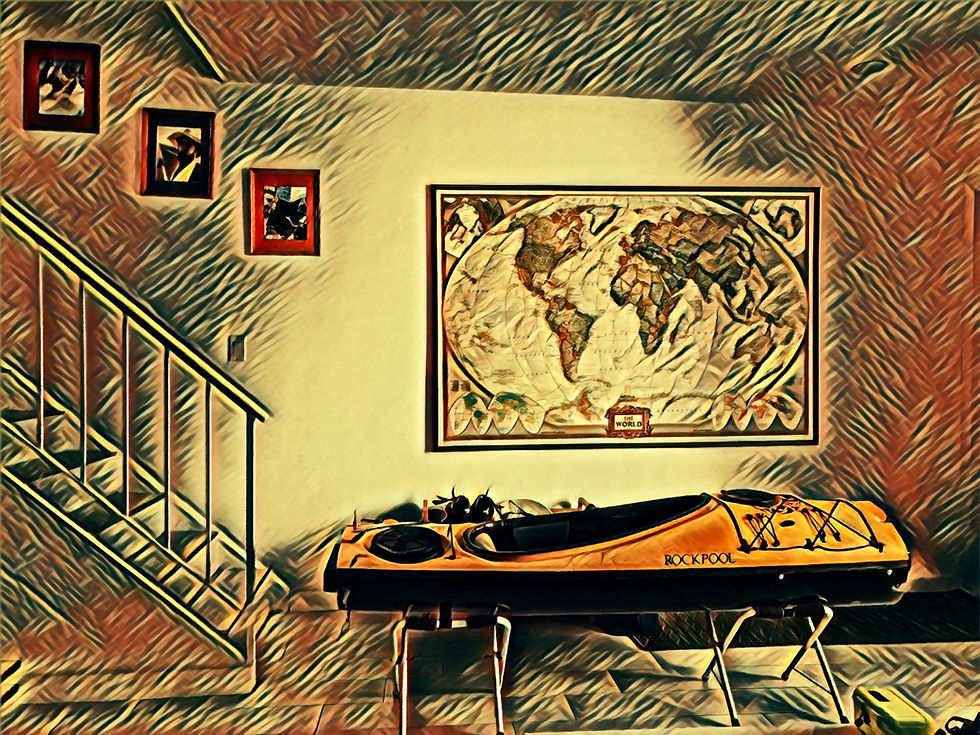Part 1 Apr. 18th - 2 Months to Departure Sea Kayak Puerto Rico Circumnavigation
- Felipe Behrens
- Nov 12, 2022
- 3 min read
Updated: Jan 27, 2024

One of the things that has been grinding in my mind about the journey lately is the North section of coastline from San Juan to Rincon. I looked at it on Google Earth; the coastline is exposed to the Atlantic swells, and the waves there can get very large. If I google Puerto Rico Surf, I get shown several videos of surfers riding huge barrel swells, some so large they take a jet ski to get on the wave. It’s humbling to watch and think that I may be out there, but with no jet ski to save me. Having no kayak surfing practice is one of the things that bothers me about kayaking in Miami. Even a mile out to sea, the water depth is hardly ever more than 12 or 15 feet, and the waves are almost always very gentle. It takes a sustained wind from due East of 25 miles per hour or more to make meaningful waves, and even then, you’ll have to paddle into that wind for a while, before you can turn around to catch anything. And of course, you have to hope that the blue boom kayak surfing day falls on the weekend, and you’re not too busy. Most of my kayak surfing practice happens when I travel to kayak somewhere else, so not much practice…
I was connected through Facebook to a paddler in Puerto Rico. We chatted over the phone, and I explained to him my plan to go counter clockwise around the island. “Oh yes, the North Coast around Isabela and Rincon can be quite rough, but in the summer, maybe it’s not so rough. Pick your paddling days according to your ability, have a good roll, and don’t be pressed for time. That’s when you make mistakes and go out when you shouldn’t,” he said.
“I have about a month,” I said.
“Oh, that should cover you. You don’t see many Puerto Ricans in a hurry most of the time. When you’re out there you can give me your GPS link, and I will keep an eye out for you. Maybe I join you part of the way.” I would not mind some company on the North Coast.
Please Consider Buying an Item to Help me Keep the Site Funded
I went out for a paddle after work in the afternoon. When I arrived back home and was washing the kayak, I noticed that the electric bilge pump was not starting. “Perhaps the battery needs charging”, I thought. When I opened the waterproof battery box, however, I noticed there was moisture in it, and the inner foam insulation was smeared with a light orange rust. The gaskets around the cable orifice were not quite as water tight as they seemed. I always feared this might inevitably happen someday. Do-it-yourself electrical equipment set up and sea kayaks are a risky combination. I will fix it this time with a new battery, cables, some calking, and add an extra zip lock for the battery in the box, but if it fails again, I will get rid of it.
I’ve been thinking about when exactly would conditions really be so terrible that I would need the electric pump and I cannot come up with a good enough answer. The setup is about 2 pounds of weight and takes up room in front of my feet. I’m confident with my roll on either side of the kayak. Conceivably, I may wet exit if in very large surf conditions I get thumped hard on a massive barrel wave, but if that happens, am I really going to cowboy ride back into the cockpit before the next wave catches up to me? Better to point the water-logged kayak towards shore and sort things out on the beach. A solid roll is superior insurance than an electric bilge pump, and there is no weight penalty for that. Can anyone think of a situation when an electric bilge pump is really going to be indispensable? I cannot.
Sea Kayak Puerto Rico Circumnavigation













Comments